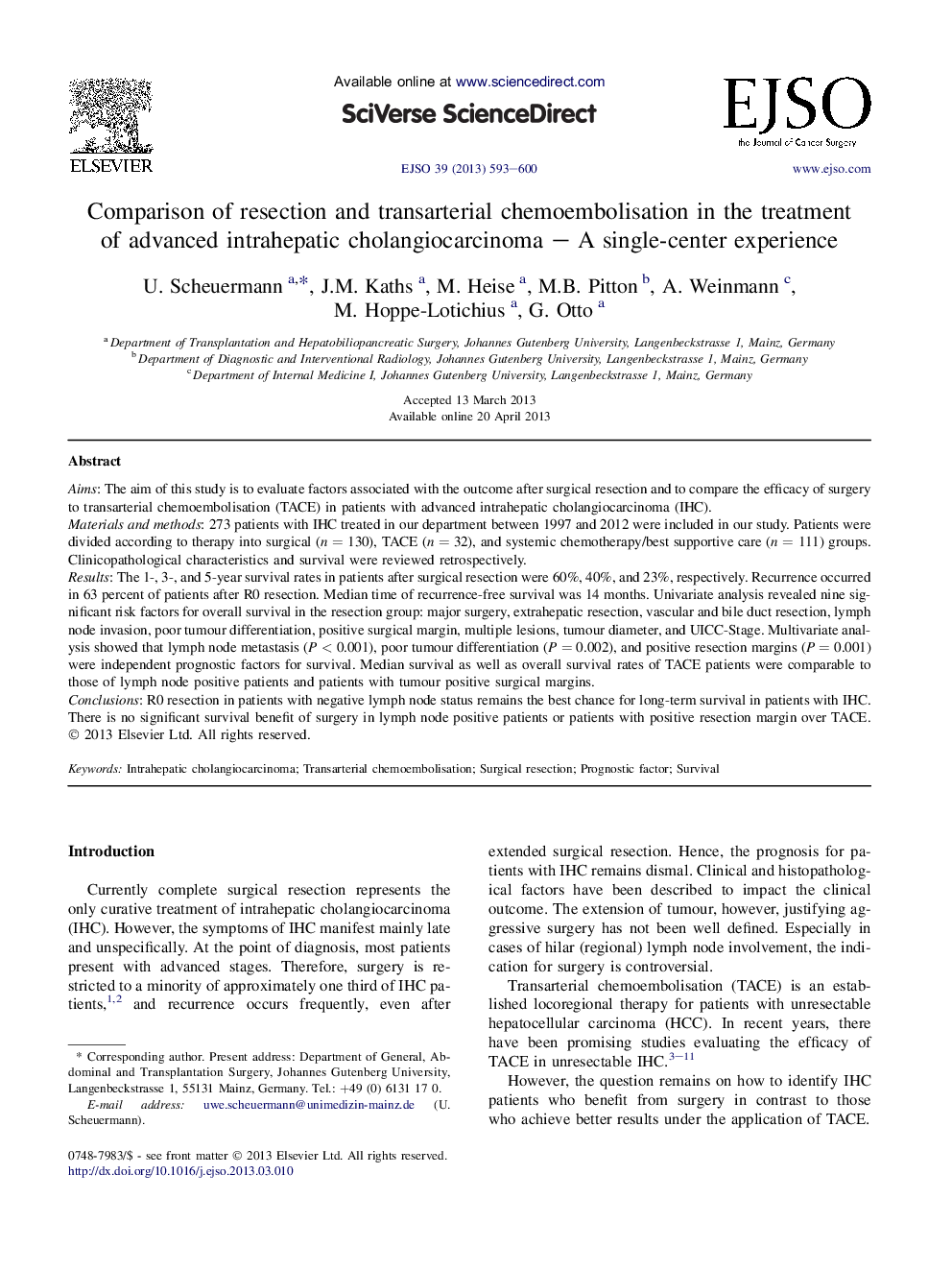| Article ID | Journal | Published Year | Pages | File Type |
|---|---|---|---|---|
| 3985478 | European Journal of Surgical Oncology (EJSO) | 2013 | 8 Pages |
AimsThe aim of this study is to evaluate factors associated with the outcome after surgical resection and to compare the efficacy of surgery to transarterial chemoembolisation (TACE) in patients with advanced intrahepatic cholangiocarcinoma (IHC).Materials and methods273 patients with IHC treated in our department between 1997 and 2012 were included in our study. Patients were divided according to therapy into surgical (n = 130), TACE (n = 32), and systemic chemotherapy/best supportive care (n = 111) groups. Clinicopathological characteristics and survival were reviewed retrospectively.ResultsThe 1-, 3-, and 5-year survival rates in patients after surgical resection were 60%, 40%, and 23%, respectively. Recurrence occurred in 63 percent of patients after R0 resection. Median time of recurrence-free survival was 14 months. Univariate analysis revealed nine significant risk factors for overall survival in the resection group: major surgery, extrahepatic resection, vascular and bile duct resection, lymph node invasion, poor tumour differentiation, positive surgical margin, multiple lesions, tumour diameter, and UICC-Stage. Multivariate analysis showed that lymph node metastasis (P < 0.001), poor tumour differentiation (P = 0.002), and positive resection margins (P = 0.001) were independent prognostic factors for survival. Median survival as well as overall survival rates of TACE patients were comparable to those of lymph node positive patients and patients with tumour positive surgical margins.ConclusionsR0 resection in patients with negative lymph node status remains the best chance for long-term survival in patients with IHC. There is no significant survival benefit of surgery in lymph node positive patients or patients with positive resection margin over TACE.
